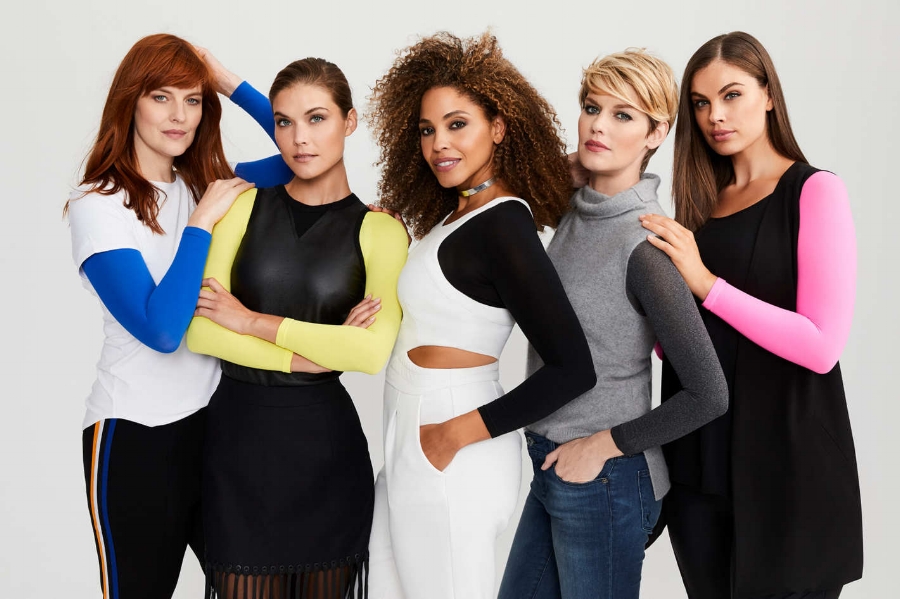
image: Spanx
Spanx, the wildly successful hosiery brand, made Sara Blakely the youngest self-made female billionaire in the U.S. at age 41. Now the Atlanta-based company is being sued for allegedly purchasing the products of another brand, copying them right down to the design of the hangtag, and passing them off as original Spanx inventions. According to the copyright and trade dress infringement lawsuit that R and A Synergy (“R&A”) filed in a California federal court late last month, Spanx is, therefore, on the hook for “willfully disregarding the laws protecting” the design and branding of R&A’s innovative slip-on sleeves.
Los Angeles-based R&A alleges that after years of research and development, its founder Ruthann Greenblat conceived of “Sleevey Wonders,” a “unique sleeved garment specifically designed as a layering piece to wear under sleeveless and strapless tops and dresses.” Beginning in December 2011, after R&A had “spent a great amount of time and resources building its business, protecting and developing its intellectual property and designing its product line,” R&A debuted its Sleevey Wonders layering sleeves.
Prior to the introduction of Sleevey Wonders, “no such category of garment existed,” argues R&A.
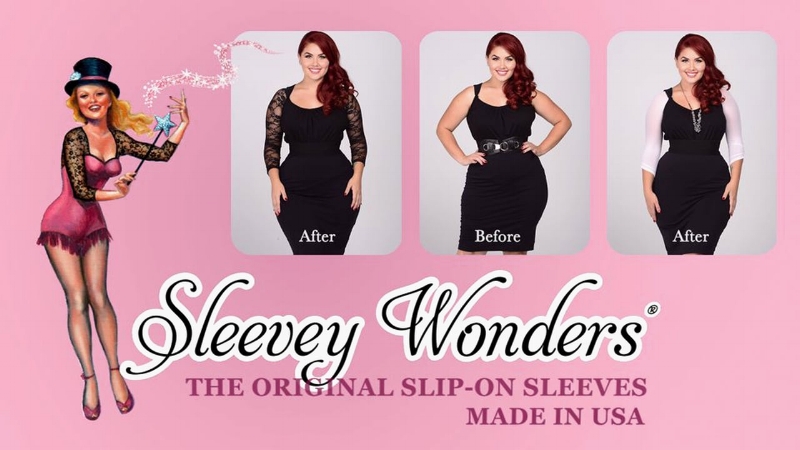
An Interesting Order
Skip forward about two and a half years. Sleevey Wonders products are being sold in indie boutiques across the U.S., as well as on Jet.com and its own e-commerce site. One day, in May 2013, R&A received an interesting order. “Jillian Doyle, Assistant to Sara Blakely, CEO of Defendant Spanx,” placed an order for “two Sleevey Wonders under sleeves from R&A.” The order, which was “shipped directly to Spanx’s headquarters in Georgia,” was to be addressed to “Lisa Magazine, Executive Assistant to Sara Blakely.”
Excited that its barely three-year old brand was on the radar of such an industry leader, R&A shipped the order to Spanx and then alleges that it followed up – in 2016, a few years later – with the hosiery giant, hoping to explore a partnership deal. R&A’s legal counsel reached out to Spanx’s General Counsel, Leslie Slavich, to “inquire about whether Spanx had any interest in discussing a potential business arrangement with the owners of the Sleevey Wonders. Ms. Slavich never returned any of the messages.”
Vogue is Losing its Mind
Now fast forward again, this time to September 2017 when Spanx debuted its brand new Sheer Fashion line. “The Sheer Fashion products are sold as layering pieces to be worn under sleeveless garments,” according to R&A’s complaint. “The line includes crop tops that are indistinguishable in appearance to the Sleevey Wonders sleeves when worn under a sleeveless outer garment.”
Spanx’s Sheer Fashion garments, namely, the “Arm Tights,” were an instant hit. The buzzy new products were profiled by everyone from US Weekly and the Huffington Post to InStyle and Vogue. As the New York Post noted in its own coverage of the new Spanx line, “Arm Spanx are happening, and Vogue is losing its mind.” Losing its mind in a good way, that is. As Vogue’s Brooke Bobb, who took the arm tights for a spin during the September 2017 New York Fashion Week shows, noted in her review, “My confidence, which is typically on life support during fashion week, was peaking” thanks to Spanx.
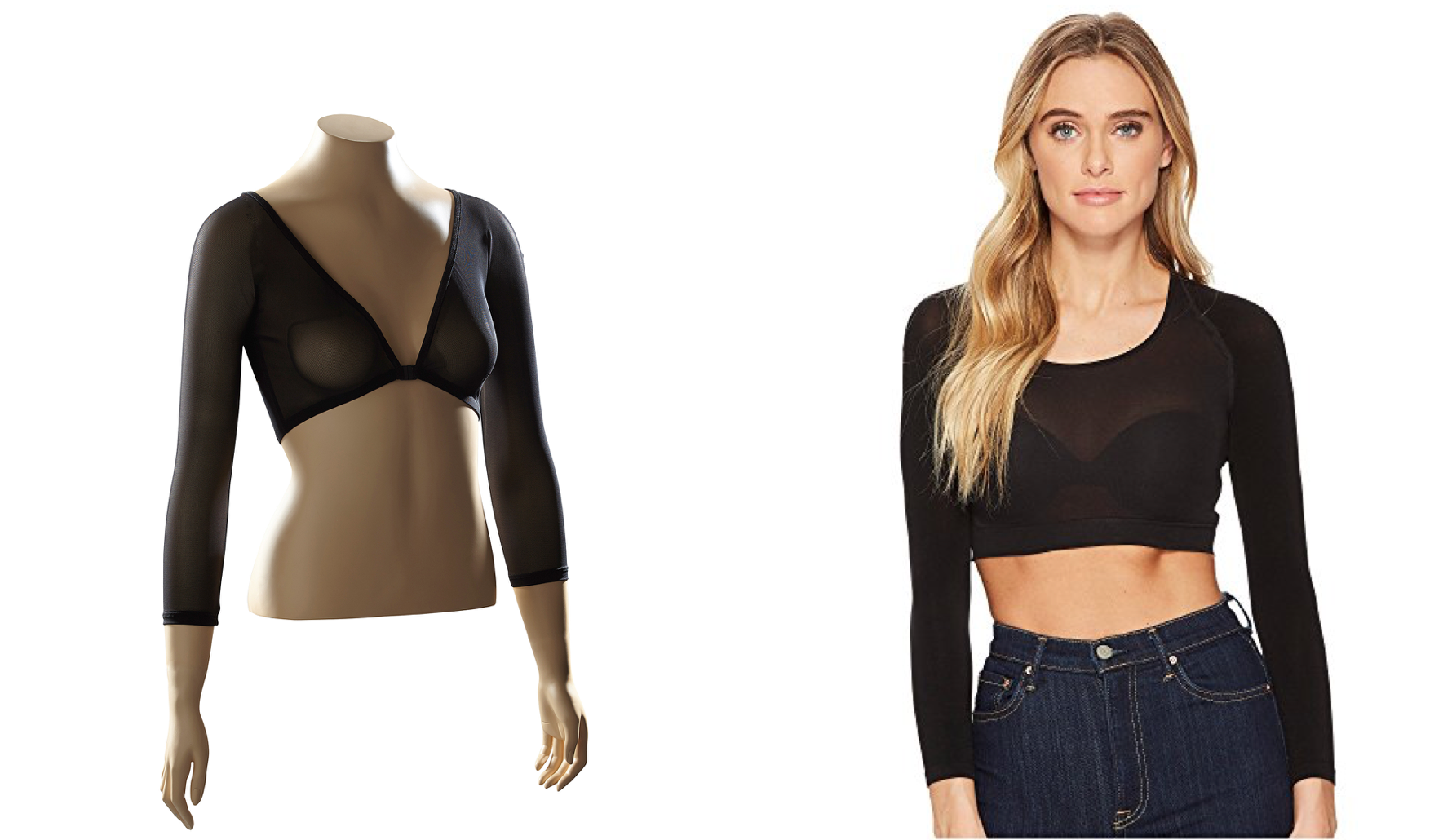
Sleevey Wonders top (left) & Spanx (right)
“Knockoff” Sleeves & “Knockoff” Branding
R&A was far less amused by Spanx’s offerings that the fashion media. In addition to merely manufacturing and selling “knockoff” sleeves, R&A alleges that Spanx has gone so far as to steal a number of its key branding elements. For instance, “similar to the slogan of R&A, ‘Magically transforming your outfit into something NEW!,’ Spanx advertises [its] Arm Tights on its website and its product packaging using the slogan, ‘Transform your wardrobe!,’ and advertises its product as being magic.”
It alleges that much like Sleevey Wonders’ copyright-protected hangtag, “which depicts paper dolls [“wearing an under sleeve and separate outer garments that can be affixed to and interchanged with the paper dolls to show the various outfits and styles that can be worn”], [Spanx’s] Arm Tights packaging also includes paper dolls wearing a sleeved under garment with various interchangeable outfits that fit over the paper dolls.”
R&A further claims that Spanx copied “a bullet point list of ‘What Sleevey Wonders Can Do For You,’” by including a “’What’s it do?’ bullet point list of product benefits” on the packaging for its Arm Tights. And still yet, R&A asserts that just like its “use of the slogan ‘Made in the USA, with love’ to advertise its product, Spanx also uses the phrase “#Madewithlove” to advertise its products for sale.”
By selling products that are “nearly identical in appearance to the Sleevey Wonders products,” along with similar branding and packaging, R&A asserts that “Spanx has acted in willful disregard of the laws protecting R&A’s goodwill, and they have intentionally confused and deceived, or threatened to confuse and deceive, the consuming public concerning the source, affiliation, connection, or sponsorship of Spanx’s Sheer Fashion products.”
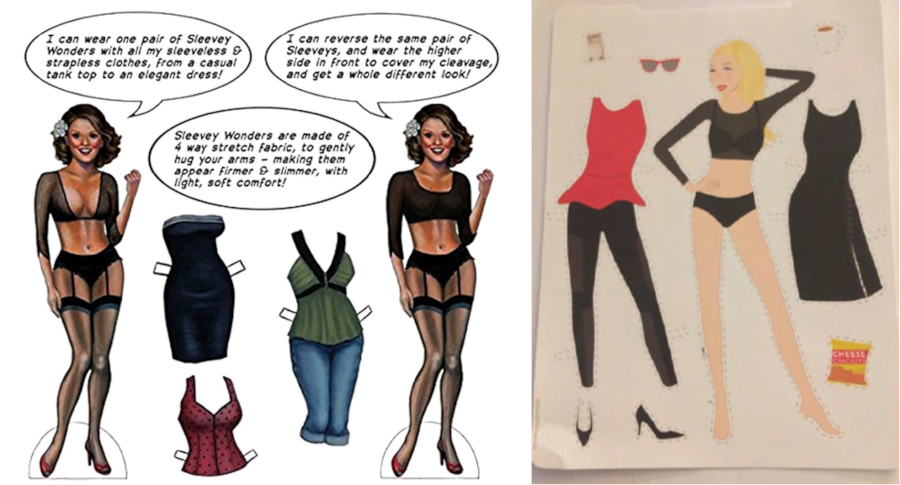
Sleevey Wonders paper dolls (left) & Spanx paper dolls (right)
In short: By selling lookalike products with similar branding and packaging, Spanx is, according to R&A, likely to give consumers the impression that its products are in some way connected to or endorsed by R&A.
Additionally, R&A is particularly disturbed by Spanx founder Sara Blakely’s public claims that she invented the arms tights concept, including telling the hosts of Good Morning America on October 27, 2017 “that she invented a product that filled a ‘white space’” in the market for such a product. Such claims are compounded, per R&A, by Blakely’s “misleading” statements about “her mission to support women, namely, women who live an entrepreneurial life, when, in fact, she is knowingly and intentionally capitalizing on R&A and its CEO Ruthann Greenblat’s ideas, another female business owner and entrepreneur.”
In connection with its claim, R&A is seeking injunctive relief (which, if granted, would require Spanx to immediately and permanently cease all sales of its Arm Tights and their packaging) and monetary damages.
Likelihood of Success
The question remains, however, does R&A actually have merited claims to stand on? The copyright claims, for one, seem a particularly uphill battle for R&A, as the two parties’ paper dolls do not bear much resemblance, and the idea of including paper dolls in connection with a product’s packaging is not protectable. (Copyright law, as you may know does not protect ideas but the original expression of ideas).
Similarly, absent any shared text on the parties’ bullet point lists, this seems like another stretch of an unprotectable idea, as opposed to a protectable expression.
As for its trade dress claims, R&A alleges that “Spanx’s Arm Tights and Sheer Fashion products use the look and feel and fabric designs of R&A’s Sleevey Wonders sleeves such that they are likely to cause confusion as to the source of the Sleevey Wonders products with Spanx products or vice versa (creating reverse confusion).” In order to prevail here, R&A will have to show that consumers associate the “look and feel and fabric designs” of its sleeves with its brand.
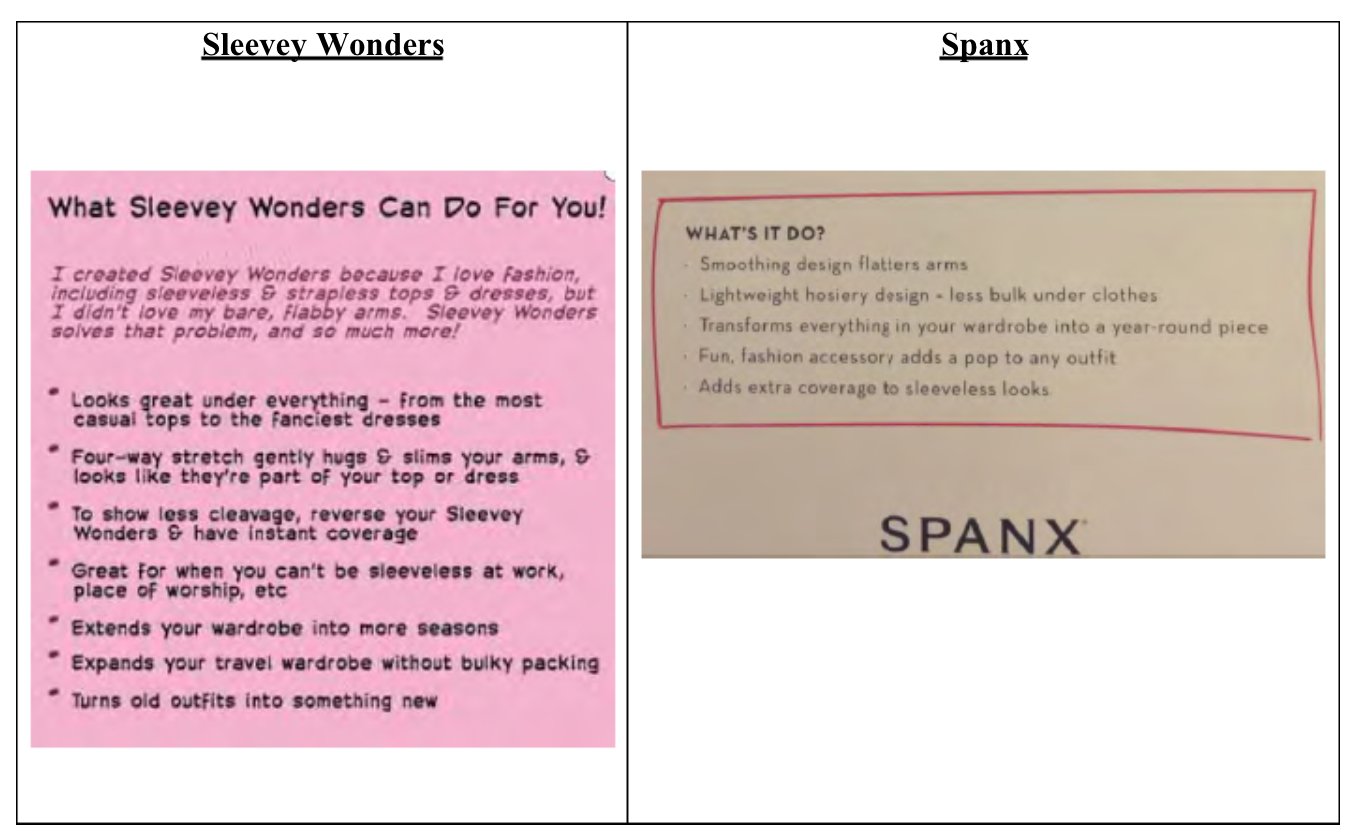
While making a case for secondary meaning (or that consumers associate a specific product with it a specific brand) already tends to be something of a difficult task for almost every brand but the most well-known and heavily-advertising ones in the world, the case at hand might be particularly difficult for R&A due to the relatively non-descript nature of the Sleevey Wonders sleeves.
And even though R&A sets out the patent protection that it maintains for its sleeves in its complaint, it is – interestingly – not asserting patent infringement claims against Spanx.
More to come … if the parties do not resolve this matter out of court in the near future, that is.
Also up for debate in the meantime: The legality of the Sleevey Wonders name. As Harvard Law School professor Rebecca Tushnet tweeted this week, “Seems like Sleevey Wonders could become acquainted … with Stevie Wonder’s right of publicity.”
Spanx did not respond to a request for comment.
* The case is R and A Synergy, LLC, v. Spanx, Inc., 2:17-cv-09147 (C.D.Cal).











